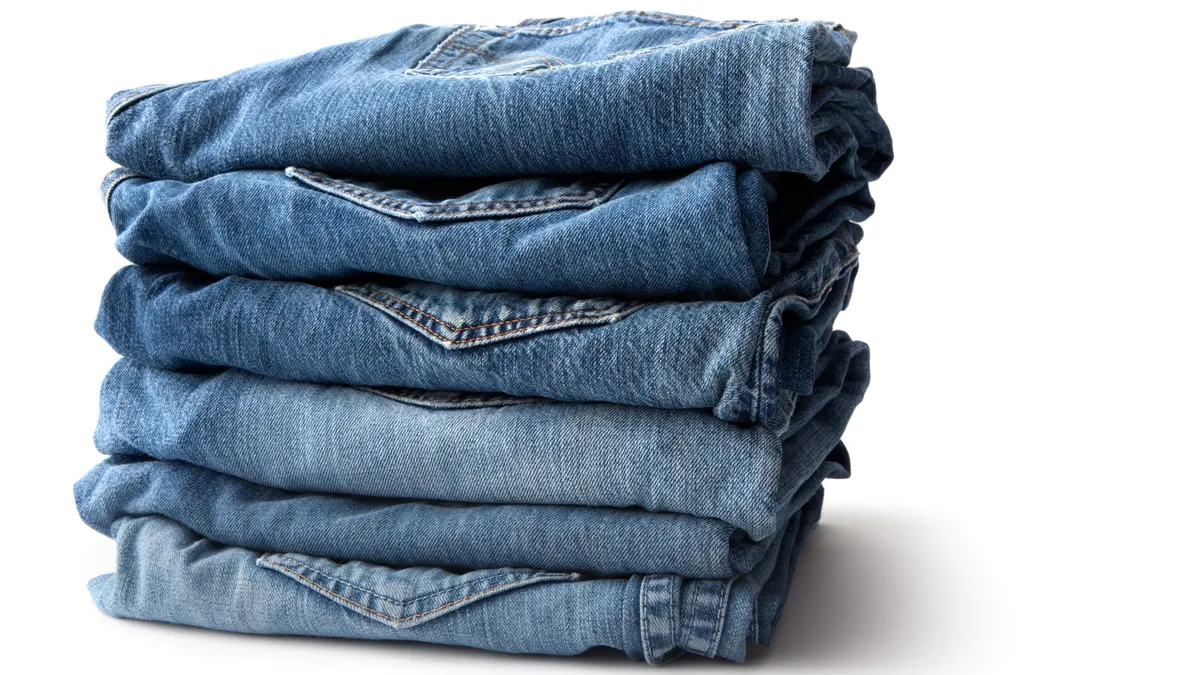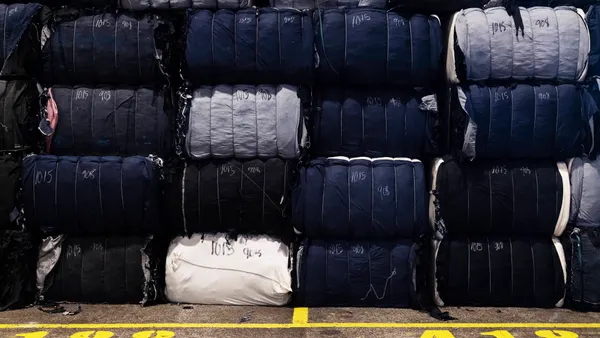Dive Brief:
- Twenty-four percent of denim finishing contains hazardous chemicals that can harm the environment and workers, according to a new report by Jeanologia, a sustainable textile solutions company.
- The company’s Environmental Impact Measuring software platform collected data from more than 115,000 denim finishing processes, recorded by 337 users at garment manufacturers and finishing plants. Pumice stones and potassium permanganate were identified as the most frequently used harmful elements in the denim finishing process, , according to a press release from Jeanologia.
- The company’s report also noted that the average water usage in denim finishing is 30 liters per garment, which is above Jeanologia’s recommended benchmark of 22.5 liters, per the release.
Dive Insight:
The report, which was compiled over the course of 2024, found that 63% of the finishing processes were classified as low environmental impact, indicating a general shift by companies towards more sustainable practices.
The report said that technologies such as laser technologies, ozone cleaning, and certified alternative chemicals can eliminate the need to use potentially harmful finishing elements..
To reduce water consumption, the report suggested using pre-ozonic treatments, micronization systems and smart foam treatment systems that use carriers, rather than water, to transfer chemicals to textiles.
“The report is both encouraging and indicative of the need for continued efforts to address the environmental impact caused by the denim garment process,” Begoña García, creator of the EIM platform and co-author of the report, said in an email. “The EIM framework emphasizes that without measurement, there can be no improvement. It serves as a tool for continuous progress and fosters collaboration among different stakeholders with a clearly defined common goal.”
While there may be costs associated with adopting technologies to combat negative finishing processes, García does not believe those costs would be passed on to consumers.
“Considering the hidden costs of non-sustainable production, implementing measures to reduce the impact of finishing processes will ultimately have a positive effect on costs,” she said.
Denim finishing uses a significant amount of chemicals and water compared to other types of apparel, said Brian Ehrig, partner at Kearney, in an email to Fashion Dive.
“It has been a necessary evil to get the right appearance, texture, and performance,” Ehrig said. “Several brands have made improving this a big focus of their sustainability efforts, such as Levi's with their waterless process where they use alternative methods to reduce water consumption and chemicals use. For example, using bottle caps and golf balls to soften denim rather than using detergents.”
The EIM platform was developed in 2009, per the report. Jeanologia said the software is used by more than 100 brands and retailers and more than 500 laundries and finishing facilities worldwide.










